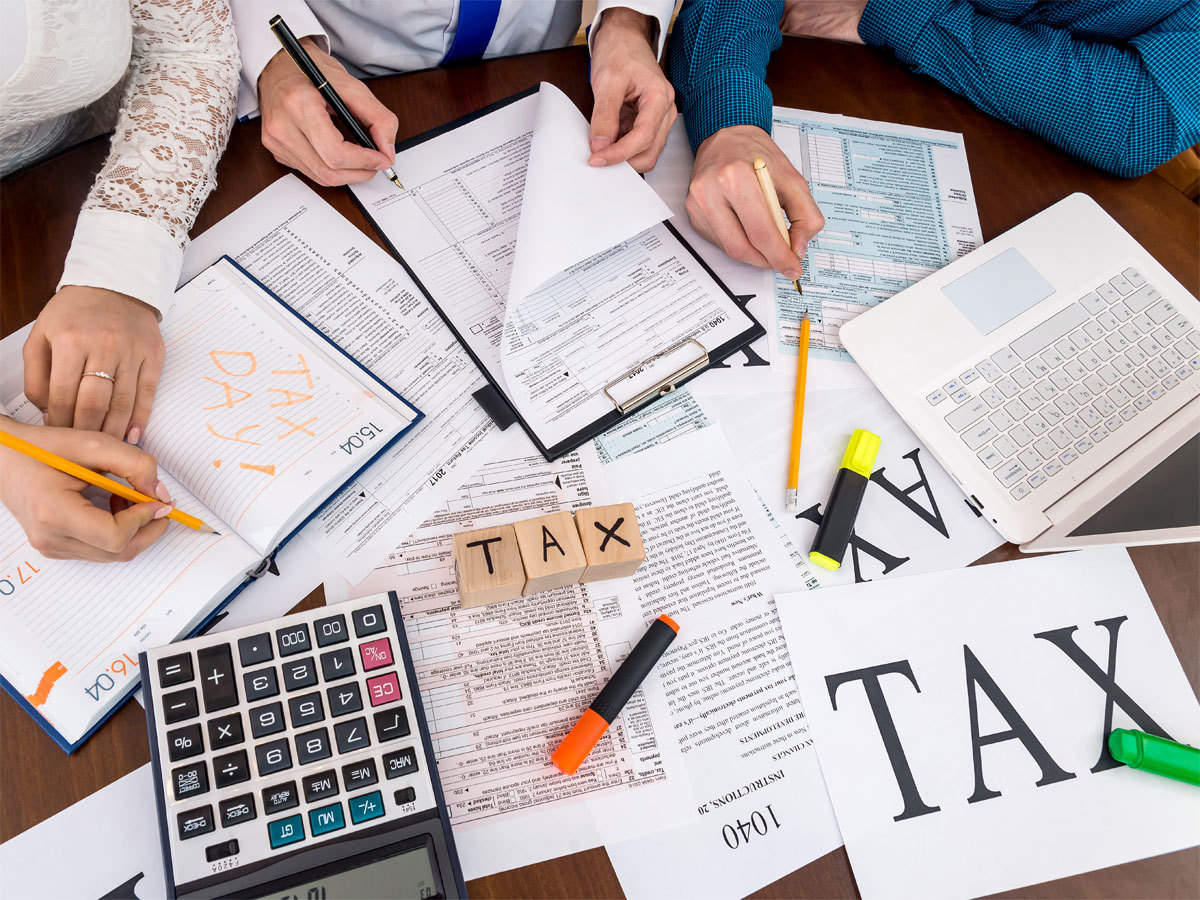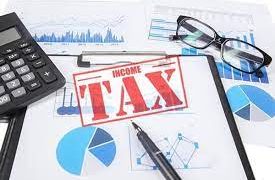HIGHLIGHTS
- ITR-1 & ITR-2 which is usually used by the salaried people to file ITR is now available on the e-filing website.
- Income tax department announced that from March 1, 2019 it will issue only e-refunds.
The government has notified the income tax return (ITR) forms for FY 2018-19. So you can now start collecting the documents need to file your ITR for the FY 2018-19. Although you have till July 31 to file your return, keeping the required documents handy in advance will make the process easier.
Here is the list of documents you must collect and things you must do before filing your ITR for FY 2018-19. Do keep in mind that for salaried people, usually file their return using either ITR-1 or ITR-2 which is now available on the e-filing website.
1. Form-16
If you are a salaried person, this is one of the most important documents for you to file your ITR. Abhishek Soni, CEO, tax2win.in, a tax-filing company, says “Form-16 is a TDS certificate issued to you by your employer to provide details of the salary paid to you and TDS deducted on it, if any. It is mandatory for your employer to issue Form-16 if your employer has deducted TDS from your salary. If no TDS is deducted from your salary, then you can request your employer to provide you the same.” ..
“ITR-1 issued by the tax department for FY 2018-19 is in sync with the Form-16. This means you are just required to copy paste the same details from the Form-16 to ITR. Last year, ITR-1 was not in sync with the Form-16 due to which taxpayers were required to use their salary slips to ascertain the required information,” adds Soni.
Form-16 consists of two parts: Part-A and Part-B. Part-A consists of all the details of the tax deducted by your employer during the year. Apart from details of the tax deducted from your salary, it also consists of the details of your Permanent Account Number (PAN), PAN and TAN of your employer, whereas Part-B of the form consists of your gross salary break-up details such as exempt allowances, perquisites etc.
Recently, the government revised the Form-16 format which provides detailed breakup of the tax-exempt allowances paid to the employee and also tax breaks claimed by him via his employer.
This year your Form-16 will also show you standard deduction of Rs 40,000. Also, if you have received any transport allowance and/or medical allowance or reimbursement, then it will be taxable in your hands for FY2018-19.
While receiving Form-16, one must check that the PAN mentioned on it is yours. If there is any discrepancy, then you must bring this to your employer’s notice. Your employer will rectify the mistakes in Form-16 and issue you a revised form.
2. Interest certificates from banks and post office
ITR forms this year also asks taxpayers to specify the source of their interest incomes such as that earned on savings account, fixed deposits or any other income.
Usually, the interest income received is taxable in the hands of an individual. However, individuals can claim deduction under section 80TTA of up to Rs 10,000 on the interest earned from savings account held with the bank and/or post office. Similarly, senior citizens can claim deduction of Rs 50,000 on the interest income earned from the deposits held with banks and/or post office.
Soni says, “Any discrepancy or any wrongly claimed deduction will be easily spotted by the income tax department.” Therefore, you must be careful while filling these details in your ITR. One must get the interest certificates either from the bank/s and/or post office branch/or any other financial institution to know the total interest earned.
If you do not get interest certificates, make sure your account passbook is updated and shows details regarding the interest credited to your account till March 31, 2019. Alternatively, if you receive TDS certificate for tax cut on interest income from a particular source (like a bank) for the full FY, then the interest earned will be stated in the TDS certificate itself. In such a case, you do not necessarily need a separate interest certificate if the TDS certificates cover the entire FY.
3. Form-16A/Form-16B/Form-16C
If TDS is deducted on the payments other than salaries such as interest received from fixed deposits, recurring deposits etc. over the specified limits as per the current tax laws, your bank (in case of fixed deposits) will issue you Form-16A providing you the details of the amount of TDS deducted.
On the other hand, if you have sold your property, then the buyer will issue you Form-16B showing the TDS deducted on the amount paid to you.
Soni adds, “If you are a landlord earning rental income, then you should ask your tenant to provide you Form-16C for providing the details of TDS deducted on the rent received by you, if any.” As per the current laws, an individual is required to deduct TDS if the monthly rent is more than Rs 50,000. Further, you can check 26AS for the TDS details.
4. Form 26AS
Form 26AS is your consolidated annual tax statement. This is like your tax passbook which has information of all the taxes that have been deposited against your PAN. These include:
a) TDS deducted by your employer;
b) TDS deducted by banks;
c) TDS deducted by any other organisations from payments made to you;
d) Advance taxes deposited by you during the FY2018-19;
e) Self-assessment taxes paid by you.
One can download Form 26AS from the TRACES website. To download
your Form-26AS, you can login to your account on the e-filing website,
www.incometaxindiaefiling.gov.in. Once logged in, click on ‘View 26AS (Tax
Credit)’ under the ‘My Account’ tab. The website will redirect you to the
TRACES website to download the form.
You should ensure that all the taxes deducted in
FY 2018-19 are reflecting against your PAN in Form-26AS. In case of mismatch,
you should ask the deductor to rectify the mistake. If the mismatch is not
corrected, you won’t be able to claim tax-credit for that TDS deduction.
5. Tax-saving investment proofs
All the tax-saving investments made by you and
the expenditures incurred by you eligible for deduction under section 80C,
80CCC and 80CCD(1) during FY2018-19 can help you lower your tax liability. The
maximum tax-break you can claim under these three sections combined cannot
exceed Rs 1.5 lakh in a financial year.
The most commonly available tax breaks under
section 80C are as follows:
a) Employees’ Provident Fund (EPF)
b) Public Provident Fund (PPF)
c) Investments in equity-linked savings schemes
(ELSS)
d) Life insurance premium paid
e) National Pension System (NPS) etc.
Click here to know all the investments that are
eligible for tax-break under section 80C
Apart from investments, there are certain expenditures that are also eligible for tax-benefits under section 80C. Examples of these expenditures include home loan principal repayment, tuition fees paid for your children etc. Click here to know all expenditures that can help you save tax under section 80C.
6. Documentary proofs to claim deductions under section 80D to 80U
Apart from tax-saving investments and expenditures under section 80C, there are certain expenses on which you can claim deductions under different sections of the Income-tax Act. For instance, health insurance premium paid for self, spouse and/or children in FY 2018-19 are eligible for deduction under section 80D of the Act for up to a maximum of Rs 25,000 in a year.
If you have paid for the health insurance premium of your parents, then you can claim an additional deduction of Rs 25,000 or Rs 50,000, depending on your parents’ age. If your parents’ age is below 60 years, you can claim additional deduction of Rs 25,000. If age is 60 years or above, then you can claim additional deduction of Rs 50,000.
“If your senior citizen parents are not covered under any health insurance, then you can claim deduction for the medical expenses incurred under section 80D,” says Soni. You would need the bills of medical expenses as proof to claim this deduction.
Similarly, if you have paid any interest on the education loan, you can claim deduction under section 80E. There is no maximum limit on the amount of interest paid on the education loan. To claim this deduction, you would need an interest paid on the education loan. To claim this deduction, you would need an interest paid certificate from the bank from which you have taken the loan.
7. Home loan statement from bank/NBFC
If you have taken a home loan from a bank or any other financial institution, don’t forget to collect the loan statement for the last financial year. It will provide you the break-up details of how much principal and interest has been repaid by you. This statement is needed both as proof and as a source of information for filling your income tax return.
Interest paid on the home loan can lower your tax liability under section 24. The maximum amount one can claim under section 24 is Rs 2 lakh. You will be required to provide the amount of interest paid in the ITR form along with the rental income earned from that house property, if any. If the said house property is used for self-occupation purpose, then also you can claim deduction under section 24.
Soni says, “While filing ITR for FY 2018-19, you will be required to specify the type of property as self-occupied, let-out or deemed let-out. If you wish to carry forward your losses from the head of house property, then you need to file tax return using ITR-2.”
8. Capital gains
If you have earned some capital gains from the sale of
property and/ or mutual funds/ equity shares, then you will be required to
report these gains in your ITR.
Soni adds, “To compute capital gains
(long-term or short-term) on sale of house property, land or building one would
require the purchase deed and sale deed of the said property. In case of
capital gains accrued on the sale of mutual funds and/or shares, one would
require statements from mutual fund houses and/or brokers.”
“Remember while reporting capital gains
from sale of property in ITR-2, you will also be required to provide the
complete details of the buyer such as name, PAN, address etc.,” says
Soni.
Do keep in mind that this year, long-term capital gains (LTCG) arising from the sale (in FY2018-19) of equity shares and equity-oriented mutual funds if held for more than one year will be taxable if it exceeds Rs 1 lakh. LTCG on equity was totally tax-exempt till FY2017-18. FY2018-19 onwards, these capital gains will be charged at 10 per cent without indexation benefit if the total exceeds Rs 1 lakh. However, capital gains accrued till January 31, 2018 will be grandfathered as per new rules.
Soni says, “If you want to claim income tax refund, then you must link your PAN with your bank account and pre-validate it at income tax e-filing website. Now onwards, the income tax department will issue only e-refunds.”
10. Aadhaar card
Providing Aadhaar details is mandatory to successfully file your ITR. According to section 139AA of the Income-tax Act, an individual is required to provide his/her Aadhaar details while filing the return of his/her income.
If you have not received your Aadhaar card yet but have applied for it, then you would be required to provide the enrolment ID in your tax return.
The income tax department has made it mandatory to quote Aadhaar number from April 1, 2019 while filing ITR.
11. Collect details of investment in unlisted shares
If you have invested in shares of an unlisted company, then you are required to provide all the details of the same this year while filing ITR-2. Soni says, “Even if the source of your income is salary but you are holding shares of an unlisted company then you are mandatorily required to file ITR-2.”
You are required to provide complete details of investment along with name and PAN of the company. You will be required to ask the company about their PAN details as required in ITR-2.
Details of your investment required are divided into four heads – opening balance, shares acquired during the year, shares transferred during the year and closing balance.
Under the opening balance head, you are required to mention the number and shares held by you on April 1, 2018 and their cost of acquisition.
Under the head ‘shares acquired during the year’ you are required to mention the date of subscription/purchase, face value of shares, issue price per share (in case of fresh issue)/ purchase price per share (in case of purchase from existing shareholder).
In the third head, ‘shares transferred during the year’, taxpayer is required to mention the number of shares transferred, sale consideration received.
In the fourth column ‘closing balance’, shares held by you and their cost of acquisition.
Remember from October 2, 2018, all the new shares of unlisted company will have to be issued in demat form only. Also, the transfer of these shares can now be done only in demat or electronic form.
12. Collect bank account details
While filing your ITR, you are also required to report all the bank accounts held by you. The details required to be filled in the ITR are: – bank name, account number, account type and IFSC code. Make sure to mention correct IFSC code to ensure receiving the refund, if any, smoothly.
If you have shifted your bank branch or have an account in Bank of Baroda, Dena Bank and Vijaya Bank, then you should check the correct IFSC code from your bank branch. This is because Dena Bank, Vijaya Bank recently got merged with Bank of Baroda.
13. Update ank/post office savings account passbook, PPF account passbook
Make sure to update and check your bank passbook/s for the FY 2018-19 to report any other income such as dividend etc. while filing your ITR. Although the interest on PPF is tax-exempt, it still has to be reported in your ITR.
14. Salary slips
You may need your salary slips, as ITR 2, recently released by the income tax department, asks individuals to specify the nature of salary income such as basic, dearness allowance, house rent allowance and so on.
For more updates: Like us on Facebook and follow us on Twitter & Instagram



































